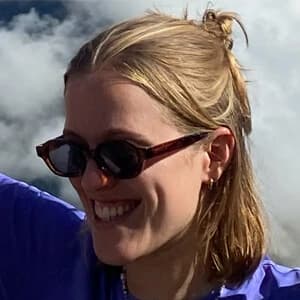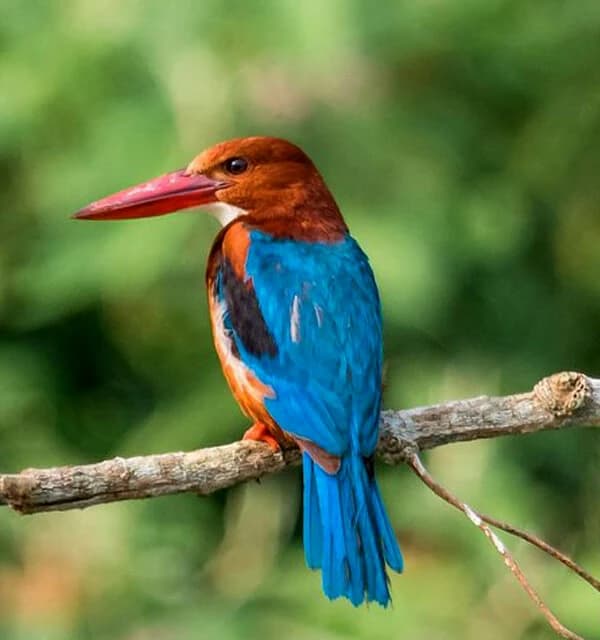Ruby Valley Kalo Daha Trek Overview
Ruby Valley Kalo Daha Trek, a sacred and isolated Lake, sits at the very lap of the Ganesh Himal Range, surrounded by breathtaking scenery and folk tales. Located in the central-north of Nepal and northwest of Kathmandu, Kalo Daha is part of the Great Ganesh Himal Trek and Ruby Valley Rural Municipality. This trail can be said to be a forgotten trail of the past since it’s not totally unexplored, but due to unseen circumstances and unavailability of proper facilities to facilitate trekkers, it became a less-known trek. But it’s a perfect place for those who seek adventure, hardships, and an equally rewarding journey, since the area still has its untouched beauty and cultural values of the indigenous people living there since ancient times. This off-the-beaten-track is best suited to extend the trip while doing the Standard Ruby Valley Trek.
Why this Trek?
There are multiple trekking route options for wilderness adventure, and we offer such treks as well. So, what makes this particular route much different than others, even though it can be categorized under the same level as others.
Kalo Daha, or rather the whole Ganesh Himal Trekking, was known for its camping place, offering a cultural experience of the Gurung and Tamang peoples. What made this trekking route different from others was not only limited to its scenic view of the Ganesh Himal Range and cultures, but also the people, groups, communities, and settlements of the century. The villages and villagers, their way of living, the folklore, stories of the people living there, and the spiritual presence of everything they have built since their ancestry are what make this place unique. Some treks might only be about reaching the destination, the place, and enjoying the view. But Ruby Valley isn’t beautiful only because of the surrounding scenery but also because of the people who truly make it special on their way. While landscapes may impress someone at first glance, it’s the warmth and kindness of a stranger in the local community that leaves a lasting impact. And Kalo Daha being part of the greater Ruby Valley is what makes this trek a unique experience for those who don’t only seek mesmerizing views of the Himalayas and unseen natural beauty but also want to know about the locality.
Who is this Trek for?
Kalo Daha is rather a secluded place due to the trail being only known to the shepherds of the Himalayas, a few locals, and people who have paid a visit, making it free of crowds even during peak seasonal time. So, it’s a perfect place for those who seek a peaceful environment with a local cultural touch. Kalo and Seto Daha are not only a regular lake that’s located at a high altitude but is believed to be a sacred lake where deities reside. So, on a sacred day, villagers with a shaman pay a visit to both deities and worship them. Which makes it perfect for those trekkers who not only seek scenery but also want to experience the culture of the Himalayan people, who want to know how they live, what beliefs they have, and how the beliefs came to be.
Best time to Trek
Since Kalo Daha is not your regular trek, which has tea houses, lodges, or homestays available throughout the trek, but is a part camping trip, the best time would be to choose from one of the two peak seasonal times of trekking from March to April or from September to November. Doing a camping trip during the monsoon can be hard due to the unpredictability of the weather, making it hard to set up camps in open fields on time. Let’s break down what kind of experience you may gain from trekking in different seasons.
March to May – Pre-Monsoon/Blooming Season (Spring Season)
- Mild to warm days make trekking and setting up camps easy.
- Forests in the Himalayas are filled with rhododendrons and different Himalayan flowers or herbs.
- Clear weather in early spring offers a panoramic view of the Ganesh Himal Range.
- Lush green hills and the Himalayas add to the scenery and photography.
- Occasional haze or clouds may occur in May, but there is still good visibility in the early season.
September to November – Post-Monsoon / Peak Season (Autumn Season)
- The weather becomes stable after the monsoon.
- Skies are clear, perfect for mountain views.
- Acknowledged as the best time for trekking in Nepal.
- Corresponds to major Nepali festivals Dashain and Tihar.
- Great time for cultural exploration, with traditional rituals and celebrations happening across villages and towns.
Difficulty Level
Trek difficulty in Nepal varies depending on the type of route you choose. Different factors like max altitude, walking hours per day, total trek days, accommodation, terrain, and other such things determine how hard the trek can be.
Looking at these factors, Kalo Daha Trek can be considered a strenuous trek since walking per day can be 7-8 hours on average. Even though the trek is short, the trail leading to Kalo Daha is unmanaged, or rather not made for regular travelers, but made by the shepherds or used by the shepherds of the Himalayas when moving their herds. The first part of the trek is short for proper acclimatization, but the rest of the trek till reaching Kalo Daha can be knee-breaking as the trail is mostly uphill for days.
So, this trek is recommended to those who already have trek experience or for those who are physically fit and can handle any kind of obstacles or unexpected encounters.
Accommodation and food
Since Kalo Daha is a part camping trip, accommodation is mostly tents, but during your stay in villages like Sertung, homestays can be arranged, though the facility may not be comparable to hotels; however, rooms are compact and clean for a few days of stay.
Food items are different when you are camping or while staying in villages. Village Homestay in Ruby Valley provides a basic meal course, not a full course item with different options like in other treks, but can be arranged as per your request if made before time. But when you are on camps, most of the food items are fixed to make it easier for traveling and cooking. Coffee can be provided in the morning with a light breakfast, quick lunch breaks during the trek, and a fulfilling dinner at the camping place.
So, to sum up, you are provided with basic lodging and food when you are at villages and fixed food items when camping.
Highlights of Kalo Daha
Kalo Daha is known for its isolated sacred beauty of the Himalayas and the twin lake at the lap of the Ganesh Himal Range. The place is not only known for the Kalo Daha (Black Lake) but also for its twin, Seto Daha (White Lake). The lakes don’t exactly connect with each other, but exist at the same location, a km apart. Geographically, Seto Daha is a bit higher than Kalo Daha, and like the name suggests, it may not be pure white, but the depth is transparent to the naked eye. While Kalo Daha is as dark as a deep lake from the edges, even though it may not be deep at the side of the lake, the color or the vision is as same as that of deep lakes. Some key highlights of the Kalo Daha are: -
- The Twin Lakes Kalo and Seto Daha.
- Panoramic view of Ganesh Himal Range.
- Lush green forest with Rhododendron Blossoms and rare Himalayan herbs.
- Cultural experiences of Gurung and Tamang natives.
- Phanchyet Monastery with a view of Ganesh Himal.
- Buddha Statue viewpoint at Ruby Valley (Sertung).
- Natural Hot Spring (Tatopani) on the way to Kalo Daha.















